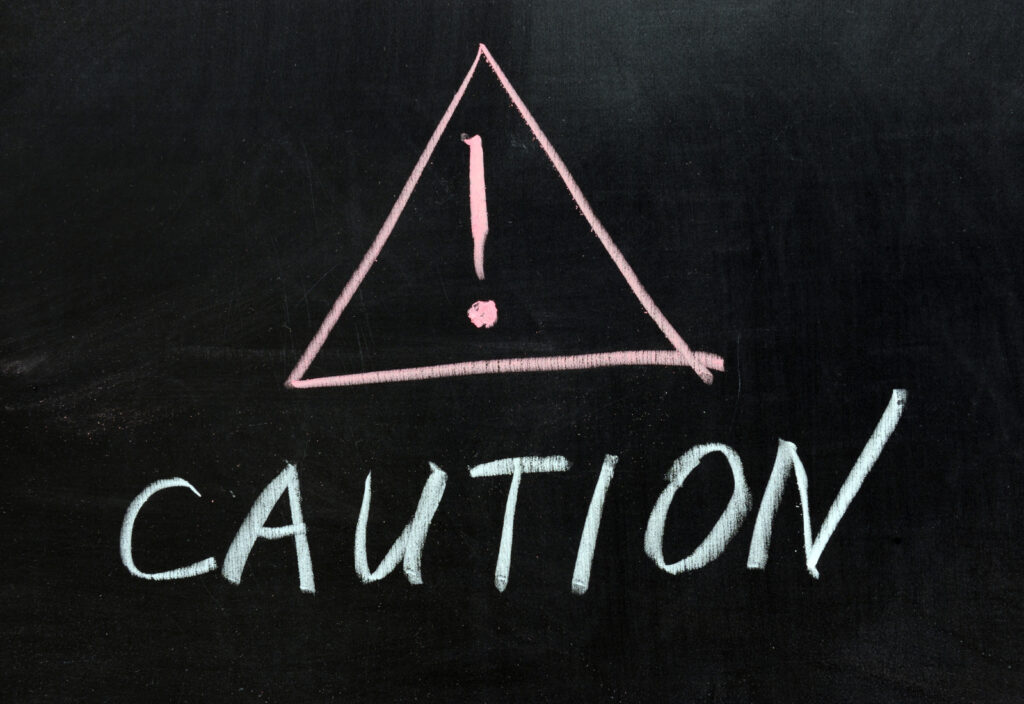Many ketamine clinics in the United States offer treatments for various behavioral health conditions, including depression. However, many healthcare providers who work for these clinics are not trained in psychiatry and/or counseling. There are various legal issues with this type of fact pattern. Among other things, are healthcare providers who are not trained in psychiatry and/or counseling competent to treat behavioral health disorders with ketamine? The answer is not always clear.
In a recent decision by the United States District Court for the Southern District of New York, the Court was faced with deciding medical malpractice claims against a physician and his practice that resulted from the death of a patient. Ricard Valdes v. Glen Z. Brooks, M.D. et al., 19-cv-617 (JGK) (2019) (Memorandum Opinion and Order). While the Court found that Dr. Brooks and his practice were not liable for malpractice, there are several lessons that can be learned from this case.
Facts
Dr. Kloda, the decedent in this case, was a physician who suffered from depression. For many years, Dr. Kloda saw Dr. Brendel, who is a psychiatrist. While Dr. Kloda was prescribed antidepressants in the past, they had little effect on Dr. Kloda.
Dr. Brooks, who is the founder and sole physician at Ketamine Infusions, provided ketamine infusions to patients who suffered from treatment-resistant depression. Ketamine is approved in the United States as a general anesthetic, but it has not gone through rigorous FDA trials for other indications (like depression). While studies exist about the use of ketamine for various disorders, none of the studies are as rigorous as a randomized controlled clinical trial.
In July 2016, Dr. Kloda approached Dr. Brooks about receiving ketamine treatments. Dr. Kloda informed Dr. Brooks that he had suicidal ideation in the past, even though such ideations were not present when Dr. Kloda commenced treatment with Dr. Brooks. Dr. Kloda sought treatment from Dr. Brooks to forestall future suicidal ideations. However, importantly for this case, Dr. Kloda “expressly prohibited Dr. Brooks from contacting Dr. Brendel.”
While Dr. Kloda reported that his immediate response to ketamine infusions was “equivocal” at best, by the end of the first treatment series, Dr. Kloda noticed a significant improvement in his mood. Dr. Brooks recommended that Dr. Kloda return for booster treatments if the improvement faded over time.
In January 2017, Dr. Kloda saw Dr. Brendel. According to Dr. Brendel’s treatment notes, Dr. Kloda was “back to [his] chronic baseline” despite his “new medication regime.” However, Dr. Brendel concluded that Dr. Kloda was “[s]table” and presented “no acute risk.” Dr. Brendel also reported to Dr. Kloda’s husband that Dr. Kloda seemed happy.
A few days after the appointment with Dr. Brendel, Dr. Kloda called Dr. Brooks several times, and Dr. Brooks saw Dr. Kloda the same day. Dr. Brooks testified at his deposition that Dr. Kloda had said on the phone that “he had had a couple of difficult days. Things were better but he wanted to come in to make sure he got it under control.” When Dr. Kloda saw Dr. Brooks, he told Dr. Brooks that he had suicidal ideations over the weekend, although they had since subsided. Dr. Kloda hoped to stop any future suicidal ideations. During this visit, Dr. Brooks inquired about whether Dr. Kloda had any concrete plans to commit suicide or whether Dr. Kloda had weapons at home. Dr. Kloda denied both questions. However, Dr. Kloda admitted that he had started preparing prescriptions and transfer notes for his patients. During the appointment, Dr. Brooks became “convinced that Dr. Kloda was not in imminent danger of any self-harm.” Dr. Kloda’s husband did not notice anything amiss on the day of Dr. Brooks’ appointment and the day following the appointment.
Unfortunately, on February 2, 2017, Dr. Kloda took his own life. Thereafter, Dr. Kloda’s husband filed a lawsuit against Dr. Brooks and his practice, alleging negligence, failure to obtain informed consent, failure to report suicidal ideation, wrongful death, and loss of consortium. Following discovery, Dr. Brooks and his practice moved for summary judgment on the outstanding claims. The Court granted Dr. Brooks’ motion for summary judgment which disposed of the case.
The law
As the Valdes court noted, to establish a malpractice claim in New York, a plaintiff must prove:
“… (1) the standard of care in the locality where the treatment occurred, (2) that the defendant breached that standard of care, and (3) that the breach of the standard was the proximate cause of injury.” Nichols v. Stamer, 854 N.Y.S.2d 220, 221-22 (App. Div. 2008) (citations omitted). The plaintiff alleges three departures from the standard of care: (a) failure to communicate and coordinate treatment with Dr. Brendel; (b) failure to develop a safety plan of action; and (c) failure to report Dr. Kloda’s suicidal ideations to the authorities.
Regarding the first claim – failure to communicate with Dr. Brendel – the Court quickly disposed of this claim on two grounds. First, under the Health Insurance Portability and Accountability Act of 1996 (“HIPAA”), Dr. Brooks was not authorized to speak to Dr. Brendel. The HIPAA regulations allow a provider to communicate with third parties without the patient’s consent only under limited circumstances, which did not apply here. Second, the plaintiff could not establish causation, which is an essential element of a medical malpractice claim. New York law requires a plaintiff to present expert testimony. As the Court noted, “…the plaintiff’s expert, Dr. Reitman, conceded that even if the defendant had communicated with Dr. Brendel, it is ‘unknowable’ whether this would have prevented the suicide.”
The Valdes court next analyzed the claim for the failure to develop a care plan for Dr. Kloda. The plaintiff argued that if Dr. Brooks developed a more involved care plan following Dr. Kloda’s last visit to Dr. Brooks, the suicide may have been averted. The Court started its analysis by reviewing the basic standards for this claim.
New York law gives physicians leeway in making care decisions. A physician “‘may not be held liable for a mere error in professional judgment.’ This rule is particularly relevant to cases involving mental health treatment, given that psychiatry is not an exact science and, therefore, decisions related to mental health treatment and discharge often involve a measure of calculated risk.” Gallagher v. Cayuga Med. Ctr., 57 N.Y.S.3d 544, 547 (App. Div. 2017). This insulation extends to a determination that a patient is unlikely to harm himself. Park v. Kovachevich, 982 N.Y.S.2d 75, 81 (App. Div. 2014). The mere fact that “a plaintiff’s expert may have chosen a different course of treatment …is not sufficient to sustain a prima facie case of malpractice.” Id.
The Court went on to note that in New York doctors must properly examine the patient and exercise their medical judgment. “In other words, a physician may be held liable if a mental health treatment decision was ‘something less than a professional medical determination’ or was ‘not the product of a careful evaluation.’” Gallagher, 57 N.Y.S.3d at 547 (quoting Ballek v. Aldana-Bernier, 957 N.Y.S.2d 108, 110 (App. Div. 2012)).
The Court noted that a reasonable jury could not find that Dr. Brook’s treatment plan was so errant that it was tantamount to the failure to exercise medical judgment. As the plaintiff’s expert conceded, where there is no current suicidal ideation, such an action plan was unnecessary. There was also uncontroverted evidence that the decedent told Dr. Brooks that his suicidal ideations subsided. The Court went on to note that even though Dr. Brooks’s notes were sparse, that alone was not enough to infer that Dr. Brooks did not undertake an examination he claims to have undertaken. Last, the Court stated that the plaintiff failed to provide expert opinions that a care plan would have been enough to prevent Dr. Kloda’s suicide.
Finally, the Court disposed of the plaintiff’s claim that Dr. Brooks failed to notify the authorities. The Court noted as it did with the first claim, that HIPAA prevented Dr. Brooks from notifying the authorities. Among other things, Dr. Brooks made a good-faith determination that there was no imminent threat to Dr. Kloda’s life – and if there had been an imminent threat, HIPAA would have allowed Dr. Brooks to notify the authorities. 42 CFR § 164.512(j)(i) (“A covered entity may, consistent with applicable law and standards of ethical conduct, use or disclose protected health information, if the covered entity, in good faith, believes the use or disclosure: …[i]s necessary to prevent or lessen a serious and imminent threat to the health or safety of a person or the public; and [i]s to a person or persons reasonably able to prevent or lessen the threat, including the target of the threat.”). Moreover, the plaintiff failed to present expert evidence as to causation.
Lessons learned
This case is a cautionary tale for ketamine providers who treat behavioral health disorders. If just one or two facts were changed, the outcome may have been much different. So, what can we learn from the Valdes case? There are several lessons.
The first lesson is to look for red flags for a patient. The first red flag occurred when Dr. Kloda would not allow Dr. Brooks to communicate with Dr. Brendel. Behavioral health treatment is not like medical ailments, where a patient can often see one doctor and receive all the treatments they need to cure an ailment. In behavioral health, it is common for patients to receive counseling in addition to drug treatments – psychiatrists prescribe medicines and psychologists provide counseling. It is vitally important that all behavioral healthcare providers communicate with one another to ensure the patient is receiving optimal care. In the Valdes case, Dr. Brooks could have declined treatment when Dr. Kloda refused to allow Dr. Brooks to communicate with Dr. Brendel.
The second lesson relates to good record-keeping for providers. The Court in Valdes specifically noted that Dr. Brooks’ “notes were sparse.” While this did not adversely affect Dr. Brooks’ defenses, it is easy to see how, in other situations, this could be extremely detrimental to a provider.
The third lesson relates to the competency of a provider to treat behavioral health disorders. In New York, the first element of a medical malpractice claim is the plaintiff must prove the “standard of care in the locality where the treatment occurred.” To meet this standard, a provider should know the “standard of care” for treating behavioral health disorders in the locality where they practice. Dr. Brooks was able to meet this standard in defeating the claims made by the plaintiff. Among other things, he inquired about self-harm and suicidal ideation. Dr. Brooks was also fortunate that the plaintiff’s medical expert could not opine that Dr. Brooks’ treatments fell below the standard of care.
The fourth lesson is applicable to providers who prescribe ketamine via telehealth. While there are specific laws about telehealth for Schedule 3 drugs, like ketamine, the Valdes Court noted that under New York law, a physician must properly examine their patients. As the Court stated, “… a physician may be held liable if a mental health treatment decision was ‘something less than a professional medical determination’ or was ‘not the product of a careful evaluation.’” (internal citations omitted). Given the subjective nature of behavioral health treatments, it is imperative that a provider undertake a “careful evaluation” of the patient (and, as noted above, take clear notes about that evaluation). This obviously requires that a provider be knowledgeable about the treatment of behavioral health disorders.
The final lesson relates to the “duty to warn.” One of the plaintiff’s claims was that Dr. Brooks did not notify the authorities about Dr. Kloda. While, in this case, the Court determined it was unnecessary, that will not always be the case with behavioral health patients. In those instances where a provider determines that someone is a potential harm to themself or others, what should a provider do? HIPAA allows notification to authorities in certain circumstances (as noted above). And even if it is a close call under HIPAA, would a provider rather be sued for breach of confidentiality or negligent manslaughter? Certainly, good legal advice is often needed in these situations.
Conclusion
The Valdes case is an unfortunate situation that helps illuminate the risks for providers who treat behavioral health disorders with ketamine. Any provider who provides such treatments needs to understand behavioral health disorders and proper treatment protocols. Ideally, such patients would receive the full spectrum of behavioral health treatments where the providers communicate with one another about the patient’s condition. Otherwise, it is not difficult to see how a provider can get trapped in a malpractice lawsuit.

























